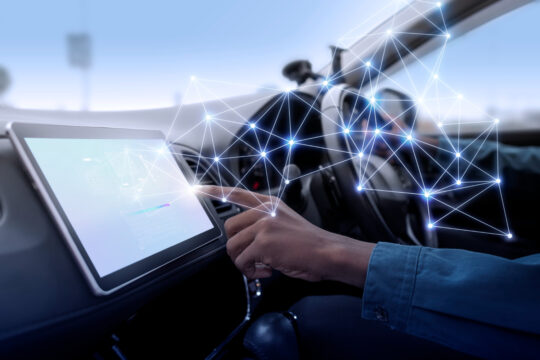![]()
Commercial surveillance systems are a vital component of many business environments. They can help companies manage safety and security, expedite incident response times and monitor customer satisfaction.
The commercial security camera market is constantly changing and evolving. New technology is being developed constantly, allowing security systems to do more than ever before.
AI Platforms
With the right technology, commercial grade security cameras can help you protect your business by deterring crime and capturing any incidents. They can also improve accountability among employees, strengthen security, and even reduce your insurance premiums.
ML advances and powerful hardware have opened new possibilities for business applications, but deployment remains challenging and complex. Data scientists who attempt to deploy their models wear multiple hats: they must build and wrap the model, serve it, route traffic, handle load balancing, and ensure that all of this is done securely.
AI platforms automate these tasks, helping you deliver predictions and take advantage of the full potential of machine learning across your business. For example, the C3 AI Platform is used by leading global organizations to develop and operate enterprise AI applications in various use cases, including predictive maintenance, inventory optimization, and fraud detection.
Other commercial video surveillance systems, such as the Rhombus System, are designed with intelligent analytics and easy-to-use cloud-based management, PoE compatibility, and night vision for reliable, 24/7 operations. Additionally, these systems can integrate with access control systems to enhance space utilization and streamline operations and business intelligence. This helps ports, oil and gas sites, and utility businesses improve operational efficiency while strengthening physical and cybersecurity posturing. Integrated systems also help businesses save time and money by eliminating redundant processes and improving productivity.
Smart Sensors
Smart sensors sense physical phenomena and convert them into electronic signals. They then transmit this data to a central system for processing and analysis. This technology is becoming more advanced, with many new features, including self-diagnostics and simplified wiring. This feature helps to reduce downtime and maintenance costs, as well as provides more efficient remote monitoring. It is also helping to boost productivity in the manufacturing sector.
With their ability to detect and report issues in real-time, smart sensors can help manufacturers optimize the performance of their machinery. These devices can also collect intelligent data to predict future machine and process performance. This data helps detect patterns and foreshadow potential problems, which can be rectified before they cause significant problems.
As centralized platforms and communication networks continue to evolve for Industry 4.0, companies need to consider integrating intelligent sensors into their supply chains. This will decrease operating costs and increase overall efficiencies throughout the supply chain. In addition, it will enable companies to improve customer service and introduce new revenue opportunities.
Two-Way Communication
While fire alarms, PA systems, digital signs, and pager alerts can all be effective in emergencies, two-way communication offers several additional benefits. This allows employees to communicate their opinions and views directly to their superiors. This can help to create a more democratic environment within the organization. It can also enhance job satisfaction and increase employee interest in the workplace. Furthermore, it is also capable of overcoming ambiguity and optimizing efficiency.
A business surveillance system can monitor many areas, including a storefront, parking lot, warehouse, or office building. It can detect movement, provide remote access and mobile notifications, and offer advanced video analytics. It can also flag suspicious activity and even direct the call to law enforcement if it detects an incident.
When paired with an access control system, it can help to improve physical security and reduce risk and liability risks. It can notify users when someone enters the facility and allow them to remotely unlock or lock entries, instantly revoking user access, adjusting permissions, or activating an alarm. Many of these systems have infrared capabilities that can also help to monitor facilities even in the dark. Additionally, they can be integrated with a cloud-based management system to make it easier for teams to review, manage, and optimize the commercial surveillance system.
Artificial Intelligence
Artificial intelligence is poised to dominate many industries, automating routine tasks and performing high-volume work reliably. It can perform data analysis, process complex information quickly and accurately, make decisions in a way that surpasses human judgment and speed, and improve the efficiency of employees.
In finance, AI has helped to spot suspicious transactions and automate manual work in areas like credit scoring, data entry, and customer service. It’s also used in customer analytics, fraud detection, and more. It’s even used in coding and IT processes, such as generative models that can produce software code based on natural language prompts, but it will be a long time before these tools replace the job of software engineers.
However, there are some concerns about how AI is being used. For example, facial recognition technology often works best on white male faces, which raises questions about privacy and potential abuse. Despite these issues, the business world is eager to use AI to streamline operations, boost productivity and improve customer outcomes. The Global Partnership on AI (GPAI) has been created to encourage the responsible development and deployment of cognitive technologies. The GPAI has working groups focused on issues such as the future of work, ethics, and security. It is expected to create a roadmap for responsible AI and provide guidance on ethical and regulatory standards.



